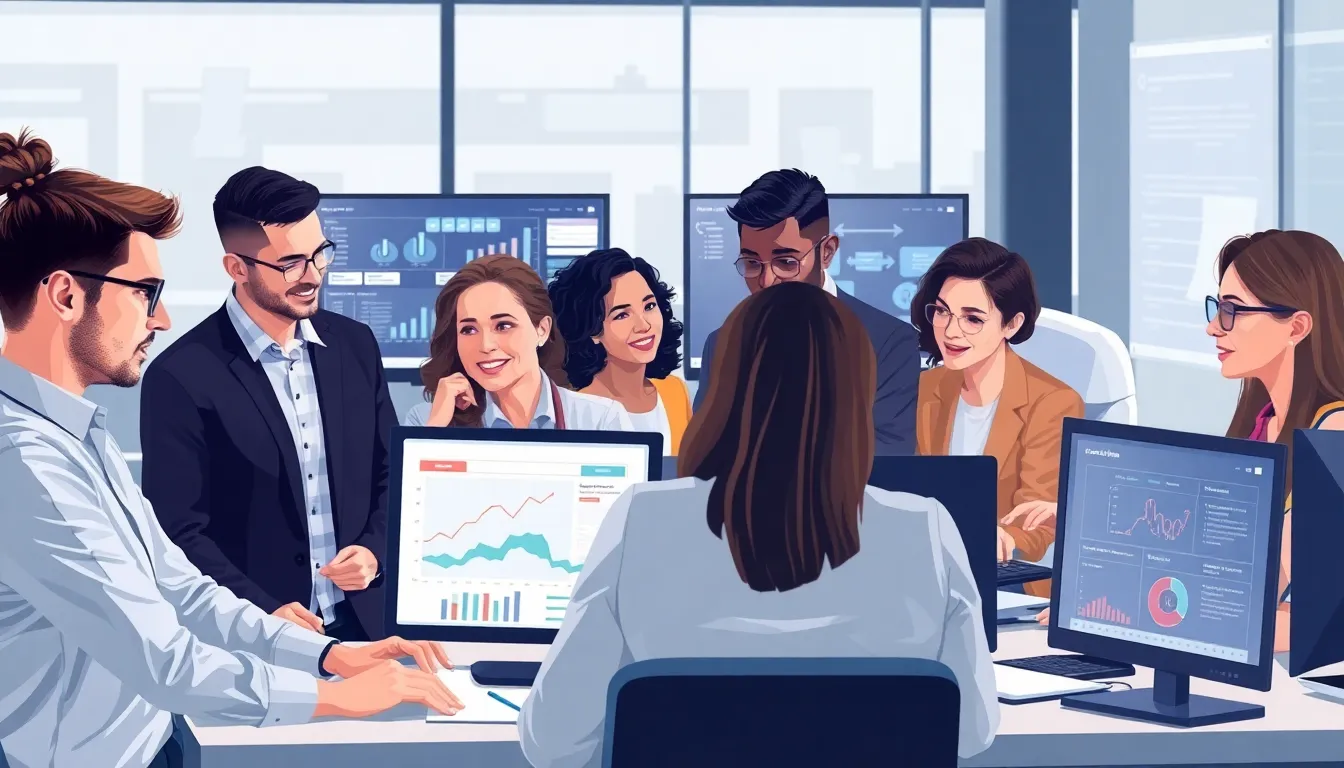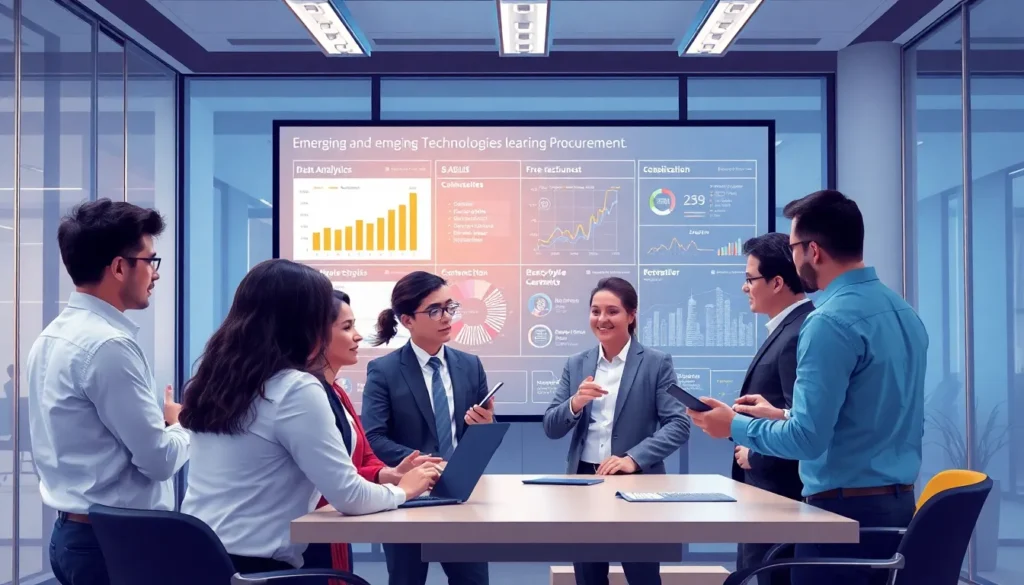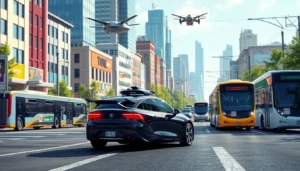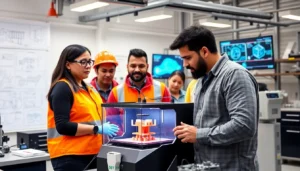Table of Contents
ToggleIn today’s fast-paced business world, procurement is no longer just about buying stuff—it’s about smart buying. Emerging technologies are shaking up the procurement landscape, making it more efficient and, dare we say, a little bit fun. Imagine a world where AI handles your supplier negotiations while you sip coffee and perfect your office chair spin. Sounds dreamy, right?
Overview Of Emerging Technologies In Procurement
Emerging technologies continue to shape the landscape of procurement. Artificial intelligence enhances decision-making processes by analyzing data and optimizing supplier interactions. Data analytics tools provide insights into spending patterns, helping organizations identify cost-saving opportunities.
Blockchain technology ensures transparency and traceability in transactions, reducing the risk of fraud and improving trust among stakeholders. Robotic process automation streamlines repetitive tasks, allowing procurement teams to focus on strategic initiatives.
Cloud computing offers flexibility and scalability, enabling organizations to access procurement tools from anywhere. Internet of Things devices facilitate real-time tracking of inventory, improving efficiency in supply chain management.
Machine learning algorithms predict supplier performance more accurately, leading to better risk management strategies. Smart contracts automate compliance and payment processes, minimizing manual oversight.
These technologies contribute to creating a more agile procurement process, allowing organizations to respond swiftly to market changes. As procurement evolves into a strategic function, leveraging these emerging technologies becomes essential for gaining a competitive edge.
Key Trends Shaping Procurement Technology

Emerging technologies are significantly transforming procurement processes. Automation and artificial intelligence play critical roles in enhancing efficiency and decision-making.
Automation And Robotics
Automation in procurement streamlines repetitive tasks, reducing manual effort and errors. Robotic process automation takes over data entry, invoicing, and order processing, leading to faster transaction times. Companies leverage automation to enhance accuracy and efficiency while reallocating human resources for strategic responsibilities. Robotics simplifies supplier onboarding and management, fostering better supplier relationships. This shift allows procurement professionals to prioritize strategic initiatives over administrative tasks.
Artificial Intelligence And Machine Learning
Artificial intelligence and machine learning dramatically enhance procurement decision-making. Organizations use predictive analytics to understand supplier performance, enabling more informed choices. Machine learning algorithms identify patterns in purchasing data, driving cost savings through optimized spend management. AI tools facilitate real-time insights into market changes, allowing proactive responses to dynamic supply chain demands. Professionals receive support through AI-driven analytics, freeing time for strategic planning and negotiation. The integration of AI transforms how procurement teams access and utilize information.
Benefits Of Emerging Technologies In Procurement
Emerging technologies significantly enhance procurement processes. Efficiency and decision-making improve with these advancements.
Enhanced Efficiency
Automation tools generate substantial time savings. Tasks that once required extensive manual input now execute quickly and accurately. Robotic process automation simplifies repetitive activities, allowing teams to focus on strategic tasks. Streamlining workflows also reduces the potential for human errors, fostering a more reliable procurement cycle. Furthermore, organizations achieve cost savings by minimizing inefficiencies associated with traditional procurement methods. Companies that embrace these technologies notice a considerable boost in procurement throughput, resulting in faster delivery to stakeholders.
Improved Decision Making
Data analytics plays a crucial role in procurement strategy development. Organizations leverage insights gained from purchasing trends to inform future decisions. Machine learning algorithms analyze supplier performance, enabling procurement teams to make data-driven choices. Predictive analytics offers foresight into market fluctuations, allowing timely adjustments to procurement strategies. Other technologies, like blockchain, ensure transaction transparency, leading to trust among stakeholders. With these insights, professionals make informed decisions that align with organizational goals, driving improvements and competitiveness within the marketplace.
Challenges Of Implementing New Technologies
Implementing emerging technologies in procurement presents several challenges that organizations must navigate.
Resistance To Change
Employees often resist adopting new technologies, especially when accustomed to established processes. Concerns about job security may arise as automation becomes more prevalent. Fear of the unknown and potential disruptions contribute to this reluctance. Clear communication about the benefits of technology adoption helps address these issues. Involve team members in the transition process to foster a sense of ownership. Establishing comprehensive training programs also ensures staff feel confident in using new tools effectively. A well-structured change management strategy mitigates pushback and encourages a smoother transition.
Integration With Existing Systems
Integrating new technologies with existing systems poses significant challenges for organizations. Compatibility issues frequently arise during the integration process, complicating data exchange and workflow continuity. Data migration requires careful planning to avoid losses or inaccuracies. Moreover, organizations must address potential disruptions to ongoing operations during the integration phase. Ensuring that new technologies align with current infrastructure is crucial for maintaining operational efficiency. Collaborating with IT teams can streamline this process and minimize negative impacts. Continuous support and maintenance also play essential roles in achieving successful integration, ultimately leading to enhanced procurement functions.
Future Outlook For Procurement Technologies
Emerging technologies are set to revolutionize procurement processes. Artificial intelligence and machine learning will become pivotal in predicting market trends. Intelligent systems analyze patterns, enabling procurement teams to make more informed decisions. Data analytics provides actionable insights from purchasing behaviors, enhancing strategy development.
Blockchain technology guarantees transaction transparency and builds trust among stakeholders. With smart contracts, compliance and payment processes become automated and efficient. Implementing these tools streamlines operations and reduces manual errors, creating a smoother workflow. Organizations will increasingly leverage robotic process automation for supplier onboarding.
Cloud computing facilitates access to procurement software from anywhere. As systems integrate seamlessly, data migration challenges diminish. Teams can then collaborate more effectively, ensuring that everyone stays aligned with procurement objectives. Automation also frees up valuable time, allowing professionals to focus on strategic responsibilities.
The future landscape of procurement will emphasize agility and responsiveness. Companies equipped with advanced technologies can adapt quickly to changing market conditions. Enhanced supplier relationships will emerge as a significant benefit of these innovations. Engaging suppliers with better communication and streamlined processes leads to improved performance.
Resistance to technological change remains a challenge in many organizations. To overcome this, clear communication and staff involvement in the transition process are essential. Providing training and support will help individuals feel confident in using new tools. As procurement evolves, staying current with technology trends will drive competitive advantage and growth.
Emerging technologies are reshaping procurement in ways that enhance efficiency and decision-making. As organizations embrace these advancements they position themselves to respond swiftly to market dynamics and strengthen supplier relationships. The integration of AI and automation streamlines processes allowing procurement teams to focus on strategic initiatives rather than routine tasks.
While challenges like resistance to change and integration issues exist the potential benefits far outweigh the hurdles. Clear communication and involvement of team members in the transition process will be crucial for successful adoption. Staying informed about these trends will empower procurement professionals to leverage technology effectively ensuring they maintain a competitive edge in an ever-evolving landscape.







